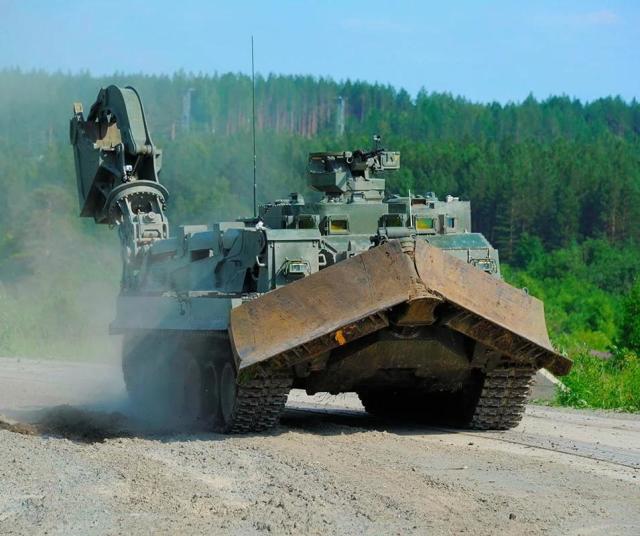Engineering troops use a wide range of heavy equipment. Some of the engineering machines are similar to their civilian counterparts, while others are unique developments created specifically for engineering tasks. One of such special means is engineering barrier vehicles (IMR), which are among the first to go forward in combat conditions, paving the way for the rest of the equipment.
Since the late 1960s, three generations of IMR have been developed, and today, at the T-72/T-90 tank base, Uralvagonzavod Concern is creating a universal armored engineering vehicle UBIM, combining the functions of several types of military engineers' equipment at once.
We talk about the history and modern examples of engineering machines of the barrier.
When there are no roads, only directions
To lay a column path for vehicles through a solid forest, windfall or destroyed buildings, fill up ditches and trenches along the way, make a steep slope more gentle, help in the organization of trenches and shelters – these and other tasks are performed today by engineering barrier machines, and for the first time such equipment began to be used in the 1930s.
At first, these were modified civilian tractors and bulldozers, and after the Great Patriotic War, specialized BAT, BAT–M track laying machines were created. They were designed on a high-passable base and were equipped with more advanced attachments and sealed cabins in case of radioactive contamination of the area. Such machines have become especially relevant with the proliferation of nuclear weapons.
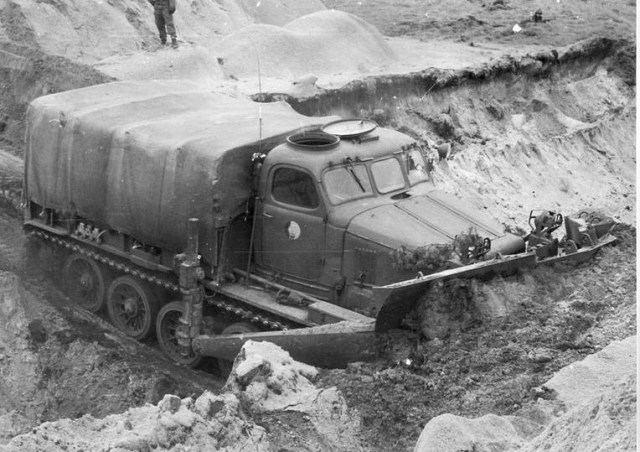
The BAT-1 track-laying machine based on the AT-T army tractor
The first in the USSR engineering vehicle of the IMR barrier was adopted in 1969. It was produced on the basis of the T-55 tank, a bulldozer part and a telescopic crane with a manipulator grip were installed on it. The first-generation IMR could pave the way in a solid forest blockage at a speed of 200-300 m/h and lift loads up to 2 tons by crane. The crew of the car was protected from radiation in a sealed cabin.
IMR-2: Into battle with an invisible enemy
With the advent of a new generation of tanks – T-64, T-72 – there was a need for more modern engineering equipment. The development of various elements of the IMR-2 was carried out in the Omsk Design Bureau of Transport Engineering, in the SKB-200 of the Chelyabinsk Tractor Plant and at the Novokramatorsky Machine-building Plant.
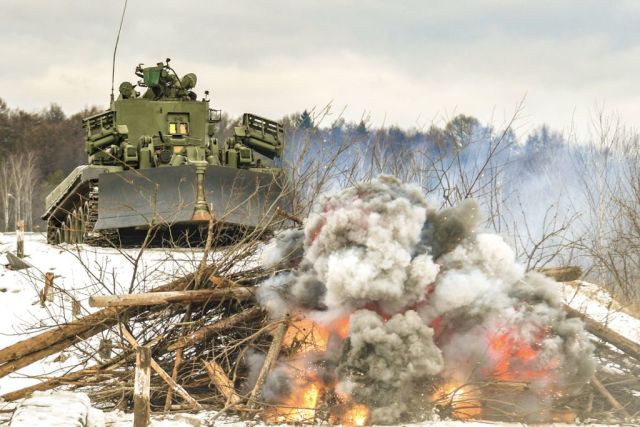
Photo: Ministry of Defense of the Russian Federation
To the bulldozer equipment and manipulator already worked out on the first generation, devices for creating passages in minefields were added – a track mine trawl and a mine clearance launcher. Another new system automatically switched the IMR-2 into protection mode when radiation was detected by the devices. Almost all functions of the machine could be performed in conditions of complete sealing. Also, for the first time, a 7.62 mm PKT tank machine gun appeared in the IMR. The machine was put into service in 1980. Serial production was organized in Nizhny Tagil and Kramatorsk.
One of the most impressive pages in the history of the Soviet IWW is its participation in the liquidation of the Chernobyl accident. Thanks to their radiation protection and powerful equipment, these machines proved to be the most suitable for operation in the immediate vicinity of a damaged nuclear reactor.
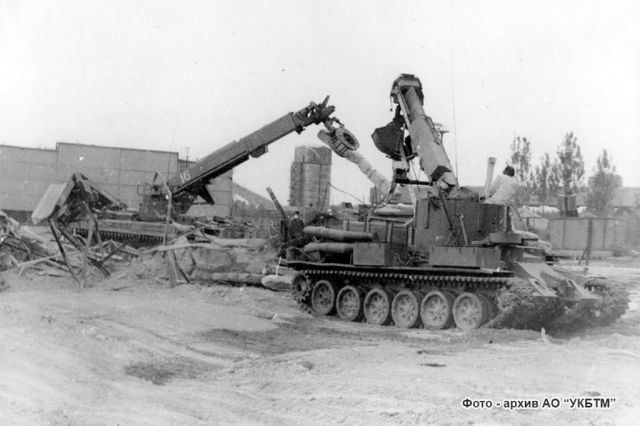
IMR and IMR-2 raked the rubble, performed measurements, collected fragments of rods, erected a sarcophagus. For work at the Chernobyl nuclear power plant, the machines were modified – excess equipment was removed, lead sheets were added to enhance protection from radiation. But all the same, the crew was in danger, and as a result, a remotely controlled robotic complex was created based on the IMR-2. All the engineering machines that worked in Pripyat remained forever at the local cemetery of equipment.
IMR-3M and UBIM: Engineering Terminators
Since 1999, a new engineering tank IMR-3, created on the basis of the T-90, has been received by the Russian troops. Work was started back in the late 1980s at the Novokramatorsky Machine-building Plant, but with the collapse of the USSR they stopped, and part of the production of IMR machines remained in Ukraine. Work has already been resumed at the Uralvagonzavod in Nizhny Tagil. Later, a modified version of the IMR-3M was developed on the basis of the IMR-3.
The tasks of the car remained the same, but a number of innovations appeared in comparison with the previous model. So, the knife-gauge minesweeper KMT-R3 was equipped with an electromagnetic prefix. The device generates an electromagnetic field similar to the field of a tank, to which, when approaching, the magnetic fuses of mines react, exploding them at a safe distance. The mine protection of the crew of the car was improved by rearranging the seats and increasing the thickness of the bottom.
IMR-3M. Photo: Ministry of Defense of the Russian Federation
IMR-3M can also operate under radiation conditions, but compared to the previous generation, the gamma radiation attenuation multiplicity has been increased from 80 to 120 times. The life support system of the IMR-3M crew has everything necessary to perform combat missions without leaving the car for three days.
The NSVT-12.7 anti-aircraft machine gun is mounted on the operator's site, which can fire at ground targets at a distance of up to 2000 m and at air targets up to 1500 m, as well as be used to destroy mines lying on the ground at a range of up to 60 m.
IMR-3M is a universal tool for the effective solution of any engineering and road tasks in the interests of the army, which can also be used in peacetime, for example, in emergency situations, to eliminate natural and man–made disasters.
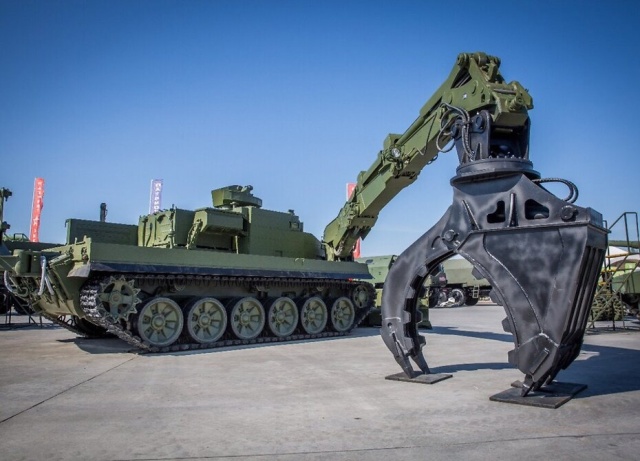
KILL. Photo: Ministry of Defense of the Russian Federation
One of the latest developments of UVZ in this direction is the UBIM universal armored engineering vehicle. It is capable of solving the tasks of three engineering units at once − an armored repair and evacuation vehicle (BRAM), an engineering barrier vehicle (IMR) and an armored mine clearance vehicle (BMR). This engineering terminator can work under heavy enemy fire and pave the way for troops even through infected territory. A full-scale sample of UBIM was first shown at the Ural stand during the military-technical forum "Army-2023".
